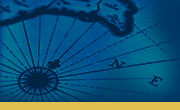  |
 |
|
Application processing (aka “prosecution”)The phrase “patent prosecution” refers to the various communications and processes that are conducted between the U.S. Patent and Trademark Office and the patent attorney in reviewing the application on the merits and in determining whether and under what circumstances the patent application will be allowed to issue. Typically, one to two years after the patent application has been filed, the U.S. Patent and Trademark Office will conduct a search of prior patents and journal articles (“prior art”) on record at the Office to determine if it believes a patent should be issued on the application as filed. If the Examiner locates prior art that he or she deems problematic, he or she will issue a rejection of the application, citing the prior art references which he or she believes makes issuance of the case improper. Otherwise, he or she will issue the case. Initial rejections are extremely common due to the large numbers of patents and journal articles on file at the U.S. Patent and Trademark Office. However, in a high percentage of cases, the applicant and his or her patent attorney can tender arguments to the Examiner regarding the prior art cited or perhaps make changes to the claim language initially presented and secure agreement by the Examiner to issue the case. Some clients are dismayed at the occurrence of this back-and-forth dialogue between the Examiner on the one hand and the client and his or her patent attorney on the other, but it is perhaps the truest indication there is regarding the genius of the patent system. In a well-run patent system, the Office charged with examination of applications shouldn’t hand out the twenty-year patent monopolies like candy; rather, the Examiners should thoroughly search the prior art, and, if they are able to locate prior art references that appear to be relevant to patentability, they should reject the application on those references so as to provoke a thoughtful discussion about the scope of the applicant’s claimed invention. This is precisely what happens week in and week out at the U.S. Patent and Trademark Office, and there simply is no doubt that the resulting U.S. portfolio of carefully examined, and thoughtfully issued, patents more fully and completely serves the long-term public interest. Our principal office is in Richardson, Texas. Our clients are nationwide. Law Office of Paul W. Fulbright, PLLC |
| Legal Services | About the Firm | Training & Seminars | FAQs | Intellectual Property Essentials | This Business of Innovation | Working with Attorneys | IP Legal News | Useful Links | Website Terms of Use | Contact the Firm | Home |
| Copyright 2007 Law Office of Paul W. Fulbright, PLLC. All rights
reserved. Registered patent attorney Paul W. Fulbright is responsible for the content appearing at this site. Principal office location: 2003 J J Pearce Drive / Richardson, Texas 75081 / 972-907-8679 / Email Us. |

